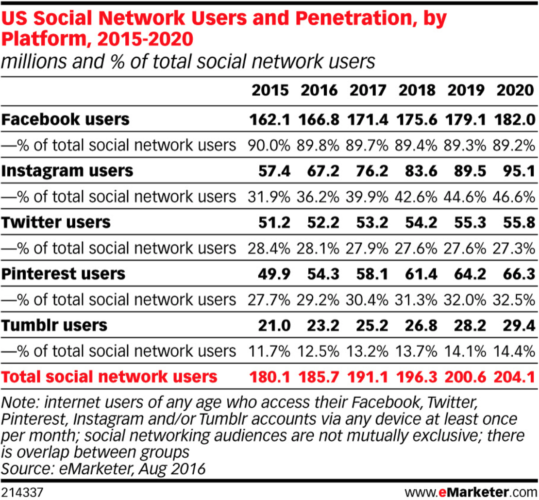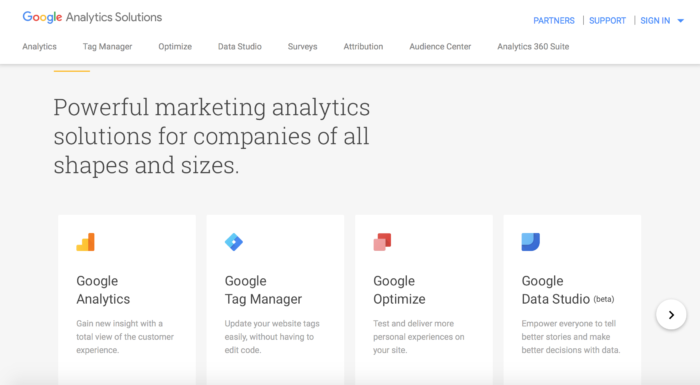When your brand starts to grow, it will become a necessary conversation in your company about how you want to allocate your budget. This can be a big moment in your digital brand that could change everything for the better if done correctly, or send your brand spinning into a disaster if done poorly.
How to Create a Budget for Digital Branding
There are so many different options on what to add to your digital brand’s budget that it can feel overwhelming to narrow down what you want to spend your budget on. However, it is important to be selective in your strategy to make sure that you get the best results.
Be smart and selective and do all your research beforehand and your brand will thank you for it.
What Marketing Strategies get the Best Results?
When 2,500 digital marketers reported to a survey which marketing activities generated the best ROI, this is what we found.
Email marketing was number one with 48% of responders saying they had good to excellent results using this tactic. Social media marketing came next with 44%, then search engine optimization, and finally content marketing. These were the top four ways that users said gave them improved results.
Marketing technologies make it possible to bring together these super effective marketing tactics to achieve better results. This will also ensure that your budget goes as far as it possibly can.
Which Social Media Channels should be Invested in?
eMarketer published a report in 2016 that attempted to project the social media penetration by each social platform until 2020.

This survey didn’t include any investment assessments, but it was pretty close to what is happening, with Twitter barely growing at all.
Facebook has remained on top, with 90% of social media users expected to be using the platform by 2020. Instagram is also expected to continue its growth, reaching 47% penetration by 2020.
With the other social channels not projected to grow as much, continuing to have relatively low penetration, this study suggests that your efforts should be focused on Facebook and Instagram when allocating funds for social advertising.
How to Set Up a Digital Branding Budget
When you’re setting up your social media budget, you need to remember to be strategic. Follow these steps to be sure that you aren’t trying to spread yourself thin across all the social media platforms, and are instead sticking to what will work the best for you and your brand.
1. Set a Goal
This is logically the first thing you need to do. Clearly outline your brand’s priorities to understand what your main objectives are. This will make sure that you allocate your marketing spending correctly.
Without a clear outline of your goals, you’ll never be able to achieve them.
Most brands usually have two main objectives. These are brand awareness and sales. There are a few others that your brand may have though.
Brand-related strategies dominant the ways companies are using social media (see Table 1), with 46% of companies using social media to create brand awareness and brand building. The next most common use is customer acquisition (31%), followed closely by the introduction of new products and services (29%) and customer retention (28%). Looking beyond these top activities, 20% of companies report using social media to improve employee engagement.
You can break these down even further though. The goal of brand awareness might have many sub-goals beneath it. These could include social follower growth, social engagement, content downloads, and content shares.
Sales can also be broken down into smaller goals. These could be converting first-time buyers, increasing upsells, and retaining repeat customers.
When you understand your brand’s goals, you’ll understand how your marketing dollars should be invested. Brand awareness is going to be a major objective for most startups, so tailor your budget to support that goal.
You might want to set aside funds for content creation and then later pumping up your content with paid promotions. If you’re an established brand struggling to convert your audience into customers, then focus on shifting your marketing funds to conversion optimization.
2. Evaluate Prior Campaigns
When you’re trying to figure out what to do next, remember where you’ve already been. When evaluating your marketing budget, specifically account for how much you’ve previously invested in each marketing channel and how successful your campaigns have been.
If you look at past campaigns, you’ll be able to identify the areas where money may have been wasted on campaigns that didn’t create sales or had a large impact.
You’ll also be able to see what channels you’re under supporting that have already proven to have a positive performance and return.
Another important thing to identify for your brand is which channels your campaign objectives were met in and were well-supported by your investment.
3. Find Research
To know where you’ll be the most successful in your marketing in which channels, you can first study what digital marketing looks like within your specific industry.

There are six main areas to focus on in your research.
1. Competitive Analysis
Here you should ask which channels your competitors are using to invest the largest portion of their marketing budget. This can help you to determine where to invest your own funds for the best results.
2. Keywords
Find out what keywords or groupings are getting the best results in organic and paid searches. You can also check out how much the estimated bids are for your desired phrases.
3. Social Communities
Find out where your audience goes the most and what the costs are of advertising on those sites.
4. Know What You Can Spend
How much you spend is going to be unique to you and your brand. There is no one size fits all answer to how much you should be spending on digital marketing.
What you can afford to spend will depend on a few factors: startup funding, current revenues, and business objectives.
However, if you check out some marketing budget benchmarks and see how your spending compares then you’ll have an idea of where you’re at least in line with your competition.
5. Allocate Your Funds
Once you have outlined your brand’s priorities, you’ll have a good idea of which marketing channels you want to use to achieve your goals. So now you get to start determining how you want to allocate your marketing spending.
One way to do this is to create a list of all the channels you could use. This list could include content marketing, social media marketing, email marketing, paid search, display advertising, conversion rate optimization, mobile marketing, or online public relations.
Then take these channels and decide which ones will have the biggest impact on your goals and give generously to those channels.
It’s so much better to invest wisely in a few channels than to spread your budget too thin across too many channels that you can’t support.
Set some funds aside that don’t have a specific category. These funds can be used to support last minute ideas or initiatives you want to use but didn’t fully plan for.
6. Track Your Success
Your success shouldn’t just be evaluated at the end of the year. You can track your campaign’s success continually, and you can schedule formal check-ins and evaluations throughout the year.
Your brand is unique. You will have your own goals and objectives you’ll be using to grow and support your business.
When you invest a lot of money into your marketing, you’ll want to check in to make sure that it’s been money well spent.
Google Analytics can help you out here.

Google Analytics can help to monitor your social media marketing and take some of the confusion out of the process. Here you can get quick answers to questions about your campaign’s successes or failures with just the click of a button.
Final Thoughts
Creating a budget for your digital brand can feel daunting at first. There are many different avenues pulling at your purse strings, but this will be the moment to keep a level head.
Get organized. Clear up your goals and what you’d like to see happen with your brand. Then take that information to answer the rest of your brand funding’s questions. Allocate funds to content development and exposure, and whatever else you’re lacking. Stick to your budget and watch your brand grow.
What have your budget strategies been?











